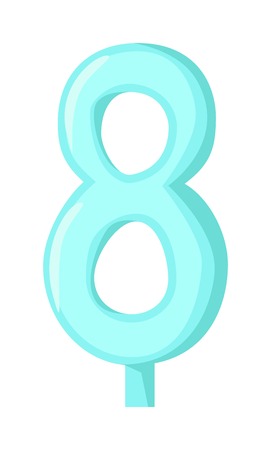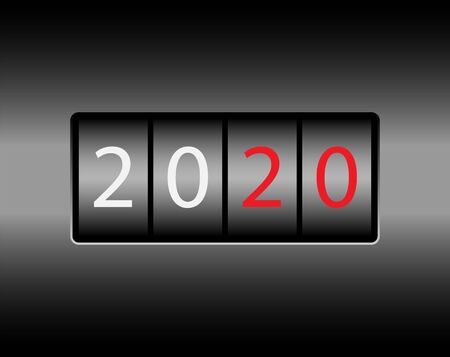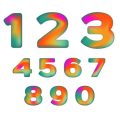1. Origins and Historical Development
The I Ching, also known as the Book of Changes, is one of the oldest and most influential texts from ancient China. Its history stretches back over 3,000 years, making it a cornerstone not only of Chinese philosophy but also of global thought and culture.
Early Beginnings in Ancient China
The roots of the I Ching can be traced to the Western Zhou Dynasty (around 1046–771 BCE), but its origins may go back even further, possibly to earlier Shang Dynasty divination practices. Originally, people used simple methods like casting yarrow sticks or coins to generate hexagrams—patterns made up of six lines, either broken (yin) or unbroken (yang). These hexagrams were believed to reveal wisdom about the present moment and guidance for future decisions.
Evolution Through Dynasties
The I Ching didn’t stay the same over centuries. Different dynasties added their own interpretations and commentaries. Here’s a quick overview:
| Dynasty/Era | Key Developments |
|---|---|
| Shang Dynasty (c. 1600–1046 BCE) | Divination with oracle bones; early symbols appear. |
| Zhou Dynasty (1046–256 BCE) | I Ching compiled as a text; use of yarrow stalks systemized. |
| Han Dynasty (206 BCE–220 CE) | Major commentaries written; Confucian influence grows. |
| Tang & Song Dynasties (618–1279 CE) | Buddhist and Daoist ideas integrated into interpretation. |
| Ming & Qing Dynasties (1368–1912 CE) | I Ching studied as both philosophical and practical guide. |
The Philosophical Shift
Originally, the I Ching was mainly used for divination—helping people make choices based on patterns seen in nature and life. Over time, thinkers like Confucius helped transform it into a guide for personal growth, ethics, and understanding change itself. This shift from fortune-telling to philosophy made the I Ching a foundation for many aspects of Chinese culture, including art, literature, and governance.
I Chings Influence Beyond China
By the 19th and 20th centuries, translations introduced the I Ching to Western audiences. Philosophers, psychologists like Carl Jung, and artists found inspiration in its symbols and ideas about change. Today, people around the world study the I Ching for insight into decision-making, personal development, and cross-cultural wisdom.
2. Core Philosophical Concepts
Understanding the Foundations of the I Ching
The I Ching, also known as the Book of Changes, is more than just an ancient Chinese text—its a guide to understanding how the world works and how we fit into it. At its heart are a few key ideas that make it both profound and practical, even for people living in today’s fast-paced American society.
Yin and Yang: The Balance of Opposites
One of the most famous concepts from the I Ching is Yin and Yang. This idea shows that everything in life has two sides that balance each other out. Think of day and night, hot and cold, or activity and rest. These pairs aren’t enemies; they work together to keep things in harmony. Here’s a simple breakdown:
| Aspect | Yin | Yang |
|---|---|---|
| Nature | Darkness | Light |
| Energy | Passive | Active |
| Season | Winter | Summer |
| Symbolism | Moon | Sun |
| Gender Association (Traditional) | Female | Male |
This balance is always shifting, reminding us that nothing stays the same forever.
The Concept of Change: Life’s Constant Flow
The I Ching teaches us that change is the only constant in life. It’s all about movement and transformation—just like the changing seasons or the ups and downs we experience every day. Instead of resisting change, the I Ching encourages us to understand it and go with the flow. That’s why people have used this book for centuries to get advice when facing big decisions or uncertain times.
The Sixty-Four Hexagrams: Symbols with Meaning
The core tool of the I Ching is its set of sixty-four hexagrams. Each hexagram is a figure made up of six stacked lines, which can be either broken (representing Yin) or unbroken (representing Yang). These hexagrams are like snapshots of different situations or states you might encounter in life. They offer insights into what’s happening now and what could happen next.
| Hexagram Number | Name (English) | Main Theme | Example Life Application |
|---|---|---|---|
| 1 | The Creative (Qian) | Strong beginnings, leadership, initiative | Starting a new business or project |
| 2 | The Receptive (Kun) | Openness, support, adaptability | Cultivating teamwork or being receptive to advice |
| 5 | Waiting (Xu) | Patience, preparation, trust in timing | Navigating a job search or waiting for results |
| 49 | Revolution (Ge) | Transformation, breaking old patterns | Pursuing personal growth or major changes |
The meanings behind these hexagrams help people see patterns in their lives and make thoughtful choices based on what’s happening around them.
The Relevance Today: Ancient Wisdom for Modern Life
You don’t have to live in ancient China to benefit from these ideas. In fact, many Americans use the principles behind Yin and Yang, change, and the hexagrams to find clarity in relationships, careers, and personal challenges. The I Ching reminds us that by tuning into life’s rhythms and seeking balance, we can navigate whatever comes our way with wisdom and confidence.

3. Traditional Uses and Methods
How the I Ching Has Guided Chinese Life
The I Ching, or Book of Changes, has long held a central role in Chinese culture as both a spiritual guide and a practical tool for decision-making. For thousands of years, people have turned to the I Ching for advice on matters big and small—ranging from personal dilemmas to government policies. Its wisdom is believed to help individuals find balance, harmony, and insight by understanding the natural flow of life’s changes.
Traditional Methods of Consultation
There are several traditional methods used to consult the I Ching. The most common involves generating a hexagram—a figure made up of six stacked lines, each line being either broken (yin) or unbroken (yang). These hexagrams are then interpreted according to ancient commentaries. Here’s an overview of the most well-known consultation methods:
| Method | Description | Tools Needed |
|---|---|---|
| Yarrow Stalk Method | This is the oldest method, involving 50 dried yarrow stalks manipulated through a series of steps to produce the hexagram lines. | Yarrow stalks (or sticks) |
| Coin Toss Method | A simpler method popular today, where three coins are tossed six times. The heads and tails determine each line of the hexagram. | Three coins |
| Digital/Modern Tools | In recent years, apps and online tools have become common ways to generate hexagrams quickly and conveniently. | Smartphone or computer |
Step-by-Step: The Coin Toss Method
- Take three coins and assign a value: usually, heads = 3 (yang), tails = 2 (yin).
- Toss all three coins at once; add up the values for each toss.
- If the total is 6 or 8: draw a broken line (yin). If it’s 7 or 9: draw a solid line (yang).
- Repeat this process six times from bottom to top to form your hexagram.
- Look up your hexagram in an I Ching book or online resource for interpretation.
The Art of Interpretation
After forming a hexagram, users refer to the I Ching’s text for meaning. Each hexagram corresponds to a specific chapter containing poetic statements and interpretations. Traditionally, these texts are read alongside commentaries written by Confucian scholars or Taoist masters. The interpretation is not always direct—it often requires reflection on one’s current situation and an open mind toward metaphorical advice.
I Ching in Daily Life
The I Ching’s guidance extends beyond major life decisions. People consult it when facing challenges at work, conflicts with friends or family, or moments of self-doubt. Its timeless wisdom encourages patience, flexibility, and awareness of change—qualities valued in both Eastern philosophy and everyday American life.
4. The I Ching’s Influence on Western Thought
Introduction to the I Ching in the West
The I Ching, also known as the Book of Changes, has fascinated Western thinkers for centuries. Its arrival in Europe can be traced back to Jesuit missionaries in the 17th century, but its real impact began in the 20th century when scholars, philosophers, and artists started exploring its wisdom. The I Ching’s ideas about change, balance, and synchronicity found a receptive audience among those interested in philosophy, psychology, and even popular culture.
Reception and Interpretation by Western Philosophers
Western philosophers have often been intrigued by the I Ching’s approach to chance and change. Unlike traditional Western systems that favor linear thinking and fixed outcomes, the I Ching offers a dynamic worldview where opposites coexist and transformation is constant. Philosophers such as Leibniz were influenced by its binary structure, which later contributed to modern computing concepts. In the 20th century, thinkers like Carl Jung used the I Ching to explore ideas of synchronicity and the unconscious mind.
Key Figures and Their Contributions
| Name | Field | Contribution to I Ching Interpretation |
|---|---|---|
| Carl Jung | Psychology | Explored synchronicity using I Ching as a tool for self-reflection. |
| G.W. Leibniz | Philosophy/Mathematics | Inspired by the binary system found in I Ching hexagrams. |
| Aleksandr Volkov | Literature/Philosophy | Brought I Ching themes into Western literature and critical thought. |
The I Ching in Psychology: Jung and Beyond
Carl Jung was one of the first major Western psychologists to take the I Ching seriously. He saw it as a way to tap into deeper layers of the psyche through what he called “meaningful coincidences” or synchronicity. Jung even wrote an introduction for Richard Wilhelm’s famous translation of the I Ching, encouraging people in the West to use it for introspection rather than just fortune-telling. Since then, many therapists and counselors have incorporated its symbols and philosophies into their practices, especially for clients interested in personal growth and self-discovery.
I Ching Themes in Modern Psychology Practices
- Personal Insight: Using hexagrams to reflect on life situations.
- Cognitive Flexibility: Emphasizing change and adaptability in therapy sessions.
- Cultural Integration: Combining Eastern wisdom with Western psychological frameworks.
The I Ching’s Place in Popular Culture
The influence of the I Ching extends far beyond academic circles. In American pop culture, musicians like John Cage and Bob Dylan referenced it in their creative processes. Artists have drawn inspiration from its symbols and philosophy for visual art, literature, and film. Even today, it appears in movies, TV shows, and online communities as a symbol of mystical insight or alternative wisdom. For many Americans, consulting the I Ching has become a personal ritual—a way to find guidance during uncertain times or make important decisions.
I Ching References Across Pop Culture Sectors
| Sector | Example Usage | Notable Figures or Works |
|---|---|---|
| Music | Lyrics inspired by hexagrams; compositions based on chance operations. | John Cage, Bob Dylan |
| Film & TV | I Ching books shown as props or tools for decision-making characters. | The Man in the High Castle (TV series) |
| Literature & Comics | Themes of fate, change, and duality explored through stories. | Philip K. Dick’s novels; graphic novels referencing hexagrams |
| Self-Help & Wellness | I Ching used for mindfulness exercises or self-discovery workshops. | Modern wellness influencers; spiritual coaches |
5. Modern Applications and Global Impact
The I Ching in Contemporary Life
The I Ching, also known as the Book of Changes, has found a unique place in modern society far beyond its ancient Chinese origins. Today, people around the world use the I Ching not just for traditional divination, but as a tool for self-reflection, creativity, and decision-making. Its wisdom appeals to those seeking guidance in everyday life, whether facing personal challenges or looking for inspiration.
I Ching’s Influence on Creativity and Literature
Writers and artists in the United States and other countries have turned to the I Ching for creative breakthroughs. Some famous American authors, such as Philip K. Dick, integrated the I Ching into their storytelling process. Musicians and visual artists also use its symbols and philosophy to spark new ideas or break through creative blocks.
Examples of Creative Use
| Field | How I Ching is Used |
|---|---|
| Literature | Story development, character decisions, plot twists |
| Music | Lyric inspiration, album concepts, improvisation cues |
| Visual Arts | Symbolic motifs, color palettes, thematic exploration |
I Ching in Business and Self-Help Practices
In today’s fast-paced business world, some entrepreneurs and managers look to the I Ching for insights into leadership and strategic planning. Its focus on balance and adaptability resonates with modern management philosophies in the US. The language of change and transformation fits well with self-help trends that encourage mindfulness and flexible thinking.
Practical Applications in Daily Life
| Area | Description of Use |
|---|---|
| Personal Introspection | Journaling prompts, meditation guides, self-discovery exercises |
| Business Strategy | Decision-making frameworks, conflict resolution tools, team-building activities |
| Self-Help & Wellness | Coping strategies during change, daily affirmations based on hexagrams, stress management techniques |
The I Ching’s Global Reach Today
The popularity of the I Ching continues to grow worldwide thanks to translations and digital apps that make it accessible to anyone with a smartphone or internet connection. Whether used by individuals for personal growth or by groups for collaborative projects, the I Ching’s core message of embracing change has universal appeal across cultures and generations.


